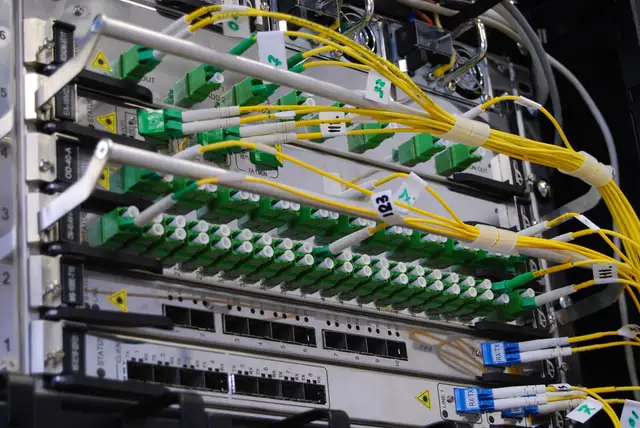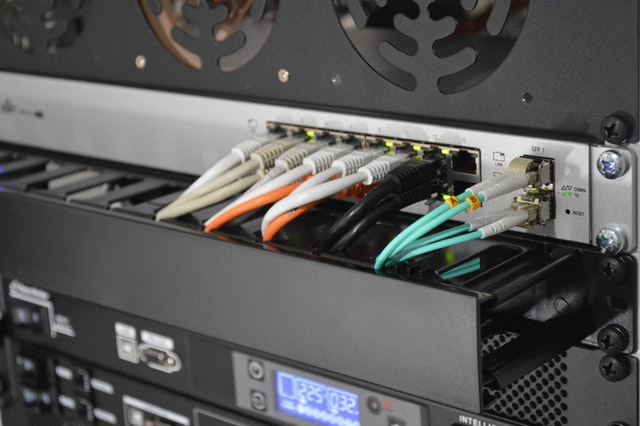What is Computer Network? Definition, Types and Benefits
Computer networks are becoming a very important technology today. The existence of computer networks can be used to maximize the potential of modern human performance. So that the level of productivity will be more optimal.
Computer network technology is a fairly complex thing. Its rapid development has penetrated into many sectors. Including one of them is into the world of the internet which is now the heart of the exchange of information.
One of the functions of the internet is to connect one computer network to another computer network. So that a collection of networks can work well together to maximize the productivity and performance of modern humans.
Definitions of Computer Networks

In this article, Langit Automation will discuss what a computer network is, its types, and also its benefits. This has the aim of introducing readers to computer networks in more detail.
Before discussing more about the types and benefits of computer networks, it is necessary to first discuss what a computer network is. After knowing the meaning of a computer network, it will make the understanding of the readers become more complete and optimal.
In short, a computer network is a collection of two or more computer devices that are connected to each other and can be used to share data resources. So that a collection of devices can run certain commands or performance according to their purpose.
At each endpoint in a network has a point known as an identifier. This identifier is called an IP address or media access control address. This is what makes each endpoint has its own characteristics or uniqueness.
Endpoints in question can include servers, computers, telephones, hardware, and even other networks. Computer networks can be built using a combination of cable-based technology or it can be wireless.
History of Computer Networks
The development of computer networks itself is quite long and winding. This computer network technology started with the idea of using computers together to run a particular project.
The project was originally run by a group of researchers from Harvard University. This activity was carried out at the Bell Laboratory led by Howard Aiken.
Then in 1950, the super computer was successfully developed. At the same time, the TSS (Time Sharing System) system was also invented. The discovery of these two things became a very important basic foundation for the development of computer networks.
This is because for the first time computer network technology began to be applied. The development of computer network technology did not just stop after the TSS system was discovered in the 1950s.
In 1982 the Transmission Control Protocol (TCP) was also discovered. Furthermore, in 1984 the discovery of the Domain Name System (DNS) made the development of computer networks increasingly rapid.
An important point of the development of computer networks is entering the decade of the 1990s. This is in line with the concept of the World Wide Web (WWW) by Tim Berners Lee. Then in the following years, the development of computer networks continues to increase.
Now computer networks and the internet have even penetrated a sector known as the Internet of Things (IoT). Internet-based technology and also automation are sectors that are currently quite in demand by the industrial sector.
Types of Computer Networks

After knowing the meaning of computer networks and their history briefly, now is the time to discuss the types of computer networks. In general, here are some types of computer networks that are commonly used in various industrial sectors.
Personal Area Network (PAN)
The first type of computer network is a PAN or Personal Area Network. This computer network has a relatively small and limited area coverage. For example, in the scope of the office, academic environment, or even on a home scale.
This network model is generally used with the main needs of the internet and printers. The limited area coverage and small scope make this network does not require large resources when used.
Local Area Networks (LANs)
The next computer network is a LAN or Local Area Network. This type of network is also used in a relatively small and limited scope. In general, this network model is almost the same as the type of PAN network that has been discussed previously.
The use of LAN networks is widely used for office environments, academic environments, and can even be used on a home scale. This network is widely used to access certain connectivity.
An example is the use of ethernet or a LAN cable-based internet connection. In addition, there is also a LAN network technology but it is Wireless. This technology is known as Wireless Local Area Network (WLAN). An example is the use of wifi technology for the internet.
Campus Area Network (CAN)
The next type of computer network is the Campus Area Network (CAN). As the name implies, this network model is more widely used in the realm of academic environments such as universities. This network is generally internal and can only be accessed by people who are within the scope of the university.
In general, this CAN network model is used for practical purposes in the lab, email correspondence, campus information updates, and so on. The specific scope of use makes this CAN computer network unable to be used by just anyone.
Metropolitan Area Network (MAN)
Metropolitan Area Network (MAN) is a type of computer network that connects devices within a city. In a city plan, generally there are devices that will be connected to each other with the same network in the city.
As the name implies, Metropolitan Area Network (MAN) has a larger scope of performance than LAN. In addition, the scale of its use is quite massive. So it is natural that it requires large resources to run it.
Wide Area Network (WAN)
If the MAN only covers a city area, then the Wide Area Network (WAN) has a wider scale of use. WAN coverage may even include several MANs in different geographic locations.
In short, a Wide Area Network (WAN) is a collection of geographically dispersed LAN networks. So that this network can cover a larger area with a more massive number of users.
Generally, WAN networks use more technologies such as ATM, X.25, and even Frame Relay. The goal is for connectivity to devices that are farther away to stay connected optimally.
Internet Network
It can be said that the internet is the largest computer network that has been discovered to date. The scope of access and use of the internet network is very wide. In fact, it covers almost all regions of the world.
The existence of the internet network allows many people to access and exchange information more quickly. Now anyone can access information using various types of devices. Starting from computers, cell phones, tablets, laptops, TVs, and so on.
Virtual Private Network (VPN)
Virtual Private Network (VPN) is a type of computer network that has recently become quite popular. VPN is a solution to provide more private and secure internet access for various data exchange purposes.
Until now, there are many VPN network providers, both for the free version or the paid version. If you want to use a VPN, make sure to only choose the type of VPN that is really credible and trusted.
Benefits of Computer Network

Computer networks have benefits that are quite large in various sectors. For information, here are some of the benefits of using a computer network that you need to know.
Computer Networks to Help Human Activities
The first benefit that can be obtained from the use of computer networks is to help human activities. The existence of a computer network will make performance more effective and efficient. So that productivity will increase.
Simplify the Communication Process
Computer networks can also provide benefits in the form of convenience in the communication process. You can communicate with teams or other people from different regions and geographies more easily, quickly, and accurately.
The existence of a faster and more accurate communication process will make the handling of problems more leverage. So that any obstacles experienced will be resolved properly.
File and Document Sharing
The next benefit that can be obtained from the use of computer networks is to share files and documents. Devices that are connected to each other will facilitate the process of exchanging files and documents.
Through this computer network you can exchange files, documents, and also data with other devices. The exchange of data that can be done more easily will make the delivery of information and data faster and more accurate.
Data Management and Security
Today, data is a very important asset. You can get a lot of insight and information from well-stored data. Therefore, data storage is a crucial thing that should not be underestimated.
In general, data will be more secure if it is stored centrally. So that it will facilitate the process of management, control, and also the arrangement of the storage of the stored data.
The existence of a computer network will make it easier for certain parties to organize and become administrators in the data management process. For example, by utilizing a shared server, employees can access the data they need more quickly and centrally.
Conclusion
A computer network is a collection of two or more devices that are connected to each other. So that it allows the exchange of data, interaction, or synchronization to perform a certain work in accordance with what has been determined. Watch on YouTube
Today, computer networks are a very important sector for many parties. Because, the existence of a computer network can be used to increase the effectiveness and efficiency of human performance.
